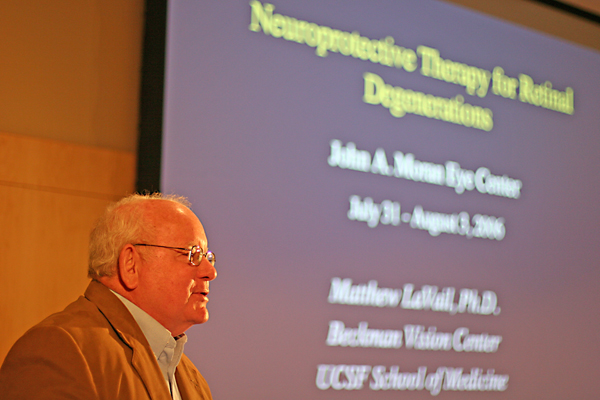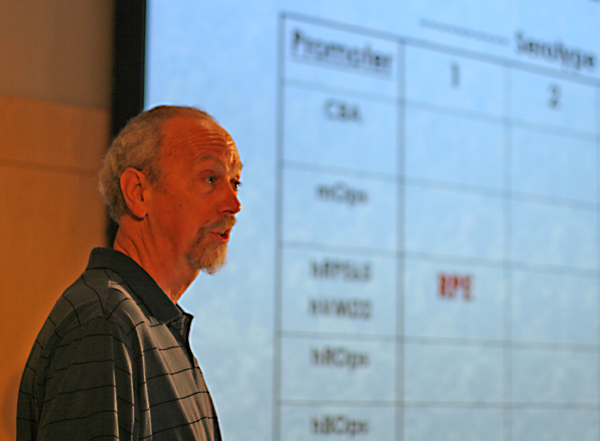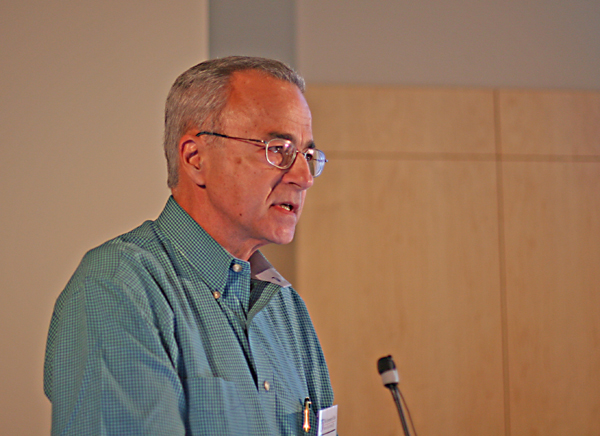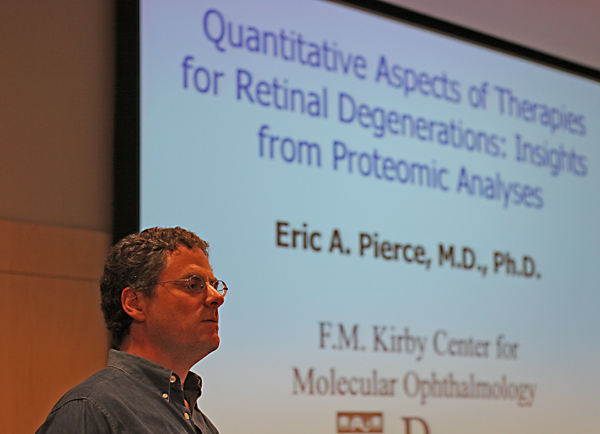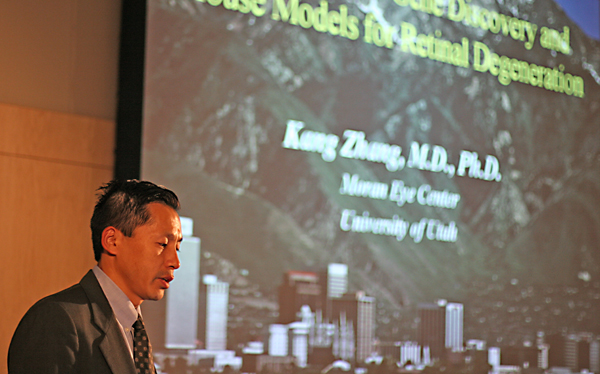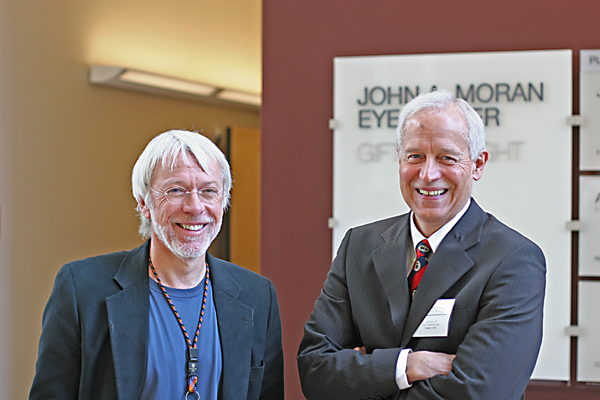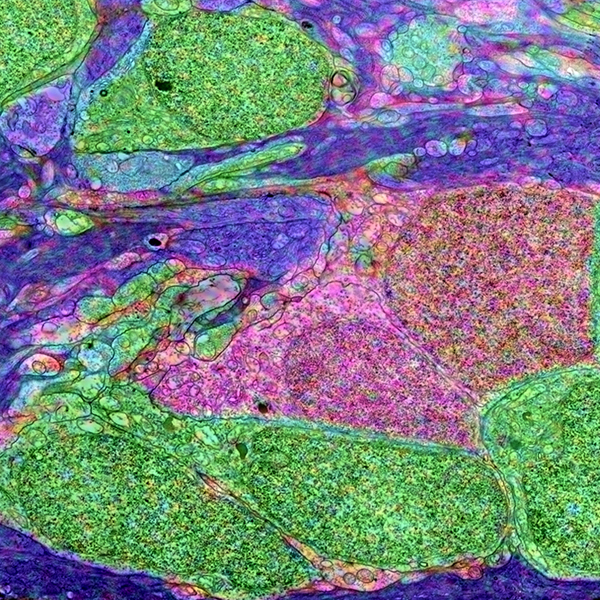
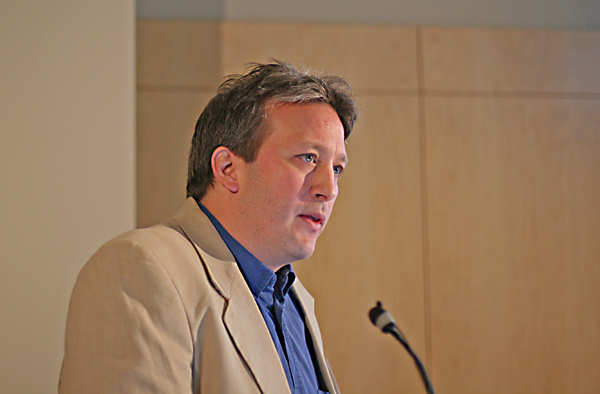
Todays seminar started off with one of our junior faculty, Ed Levine giving an introduction to the rescue and replacement session and introducing yet another one of the giants of vision and degenerative vision research, Matt LaVail.
It could be argued that it would not have been possible for me to complete my dissertation without Matt LaVail as he most generously provided a number of tissue samples, some in Eponate blocs almost as old as I am for me to analyze. His donation of RCS rat, and several rat S334ter lines were crucial additions to my dissertation and for that, I will always be grateful. Matt talked about neuroprotective therapy for retinal degenerative diseases by reviewing a number of neuroprotective agents that were discovered in the early 1990’s. He then went on to discuss his work in neurotrophic factors as pharmaceutical therapeutic agents, including proof of concept work and methods to delivery the neurotrophic factors to circumvent the blood-retinal barrier.
William Hauswirth came next with his discussion of gene therapy for recessive retinal degenerations. This is certainly one of the more exciting prospects for certain kinds of retinal degeneration that has shown amazing promise in one model of retinal degeneration. The idea is to use components and delivery methodologies from certain viruses, the AAV to optimize gene delivery to a specific retinal cell type in vivo. He talked about his labs work and showed promising data for therapy of congenitally recessive and X-linked rod, cone or RPE diseases.
Following William’s talk, Gustavo Aguirre spoke about translational approaches for the treatment of retinal diseases using the canine model. I was at the ARVO presentation a few years ago when they first announced the successful rescue of vision loss in Lancelot, a dog who would have gone blind if not for their intervention. It was truly exciting work that electrified the audience. Gus talked about the canine model and a number of inherited retinal diseases that canines share with humans including Leber’s congenital amaurosis, achromatopsia, cone-rod dystrophies, progressive retinal atrophy and Best’s disease. He finished up with a discussion of gene replacement therapies for a number of these models which was one of the more informative talks on gene therapy for retinal diseases I’ve heard in a while.
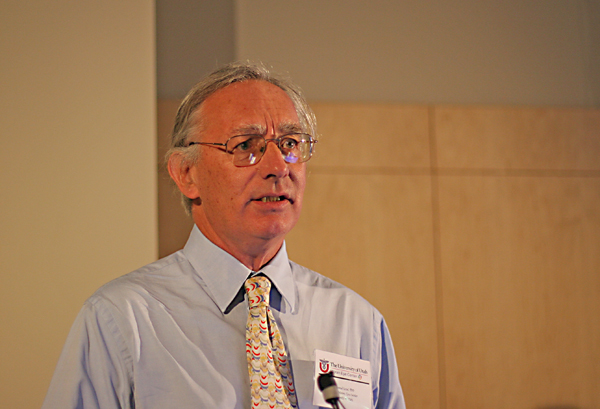
Ray Lund then talked about his work in rescuing photoreceptors from degeneration in the RCS rat. He reviewed some of the histology and pathohistology of the RCS rat and discussed a number of the cell derived therapies they have investigated in his laboratory including human derived cells designed to replace defective RPE cells. He also discussed a number of cell types that appear to release a number of growth factors demonstrating that it may be possible to achieve some degree of rescue using non homologous cells.
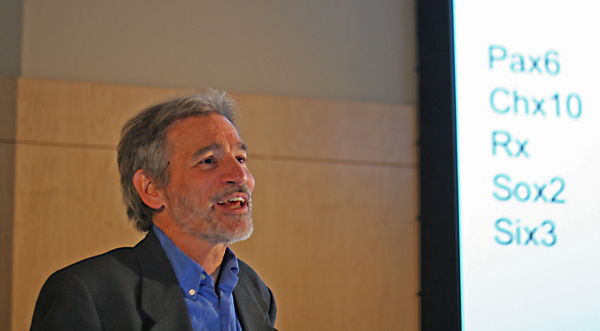
One of the better developmental biologists I’ve heard speak, Thomas Reh then gave his talk on the use of human embryonic stem cells in the treatment of retinal degenerations. While he talked about some amazing progress in understanding the development of the retina and about the methods they have developed to direct human embryonic stem cells to the retinal progenitor fate, it was painfully apparent from his talk how limited the progress in the treatment of disease has been under the Bush administration after their ban on the use of stem cells for much developmental biological work.
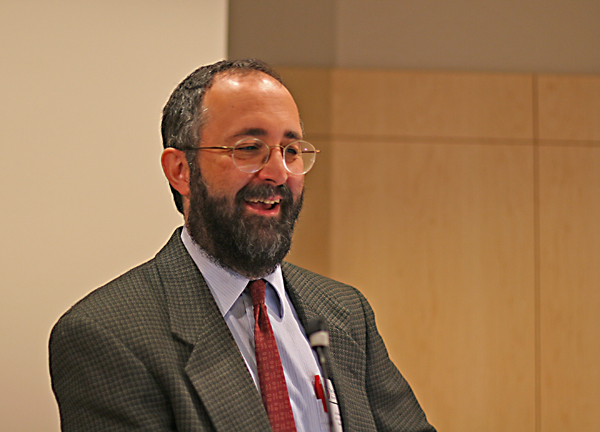
Paul Bernstein also from the Moran Eye Center here then introduced the clinical treatments session and talked about clinical treatments for retinal and macular degeneration. He also talked about where we are currently and how to balance current progress with patient expectations. I suspect Paul’s patients love him as his level of knowledge of retinal disorders and his respect of patients who are losing their vision is pretty amazing. Unfortunately, there is only so much we can currently do for our patients, but Paul’s work is active in ways that help to preserve vision for as long as possible.
The first speaker after Paul’s introductory talk was Eric Pierce who discussed quantitative aspects of therapies for retinal degenerations and his insights from proteomic analysis. His presentation was one of the more impressive talks on proteomics I’ve ever seen. His work in comprehensive analysis of the mouse photoreceptor sensory cilium was amazing from a variety of perspectives. First was the number of proteins involved (1975), making the photoreceptor cilium the most complex organelle yet identified by proteomic analysis. Next was the quality of his work and the care with which they assayed their samples and finally, while Eric did not talk about it, it was apparent that with the number of proteins, the basic biological trafficking through the cilium is a phenomenal process. No wonder there are so many trafficking defects in retinal degenerative diseases with all the proteins that need passage through the anatomically narrow region of the photoreceptor.
Kang Zhang then spoke about his work in human disease gene discovery and mouse models for retinal degeneration. Kang’s lab upstairs is staffed by a large group of competent scientists who work very hard at processing all of the tissue samples that come through allowing them to 1) identify disease genes and 2) help engineer mouse models of those degenerations so other scientists like us can use them for research. The goal of Kang’s lab, like a number of gene focused labs is to discover novel disease genes to gain insight into molecular mechanisms of disease. In Kang’s case those diseases are the retinal degenerative diseases.
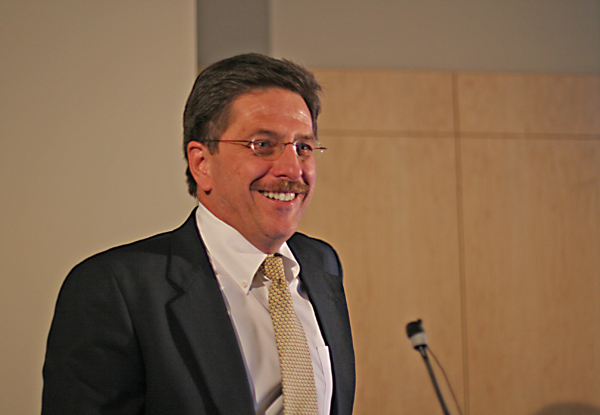
Gregory Hageman spoke about aberrant complement activation and regulation in age-related macular degeneration. Macular degeneration is the most common form of retinal degeneration and is what the vast majority of us need to worry about with respect to loss of vision as we get older. Greg talked about his work with Factor H, the principle soluble inhibitor of the complement cascade alternative pathway in the innate immune system. He discussed many of the genetic risk factors and what results from uncontrolled complement activation with bystander injury to the macula resulting in retinal degeneration and associated vision loss.
Paul Bernstein then got up again to discuss his work in HPLC measurement of ocular carotenoid levels in human donor eyes in the era of lutein supplementation. It turns out that a large number of patients take supplements containing high doses of lutein, but current clinical studies have shown only modest and variable increases in macular carotenoid pigments with supplements. His lab examined whether or not lutein supplementation can alter ocular carotenoid levels using some novel technology he developed. It turns out that according to Paul, supplementing your diet with high-dose lutein will result in higher levels of macular pigment. These results have important implications for understanding why some clinical methods of macular pigment measurement have had a tough time measuring the effects of carotenoid levels.
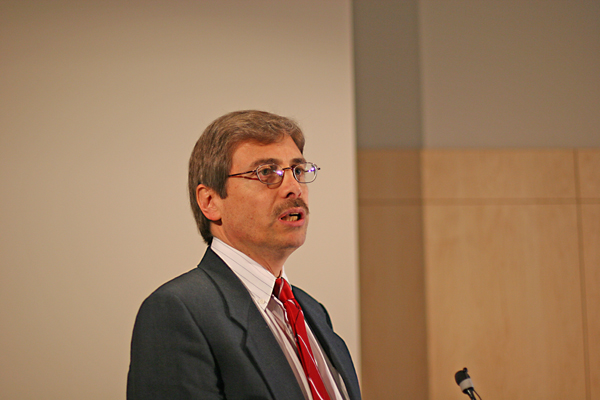
Peter Campochiaro talked about new treatment for choroidal neovascularization. His work over the past several years suggests that the vascular endothelial growth factor (VEGF) is a critical stimulus for development of choroidal neovascularization. The clinical trials he’s been involved with VEGF antagonists have provided validation of VEGF as a target and helped to validate the animals models as being predictive of performance in human trials. Peter also discussed a number of potential scenarios for modification of VEGF antagonists and possible new strategies for combinatorial treatments.
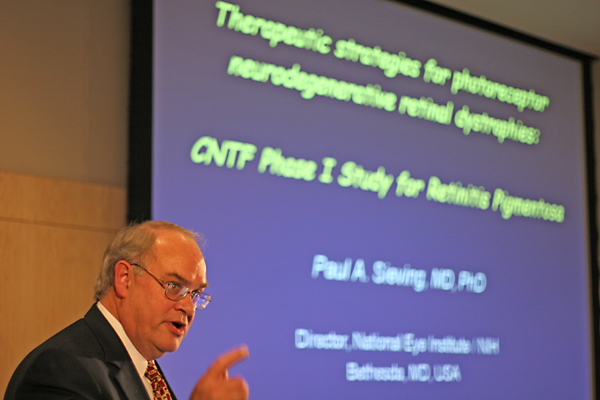
Paul Sieving, the director of the National Eye Institute at the National Institutes of Health then spoke about therapeutic strategies for photoreceptor neurodegenerative retinal dystrophies. I heard him speak at FASEB a couple of weeks ago and was very much looking forward to this talk. Paul spoke about the over 110 different genes implicated in progressive degeneration of retinal cell populations and possible therapeutic strategies including genetic manipulation to replace defective genes or even approaches designed to slow the loss of cells using neurotrophic rescue factors. He obviously is passionate about his work and cares tremendously for his patients. I cannot think of a better director for the National Eye Institute.
Again, there was a bit of opportunity to visit in-between talks and after the meeting prior to dinner.
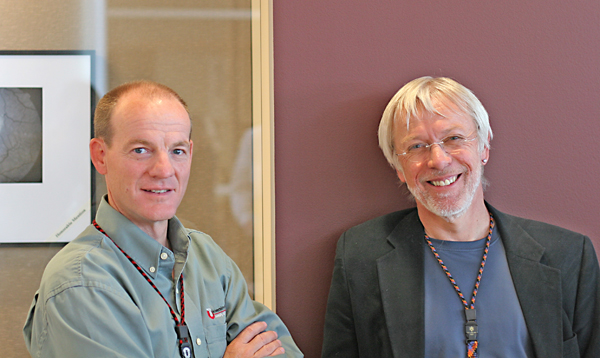
Brent Price, our CFO and Robert.
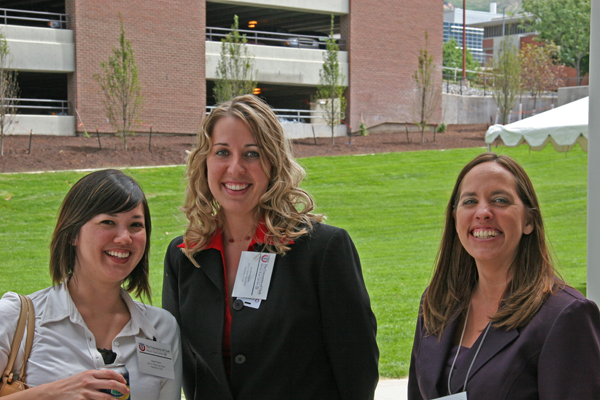
Celeste, Jen and Julee, the women responsible for helping to keep this whole thing together. Much thanks to these people for making it happen.
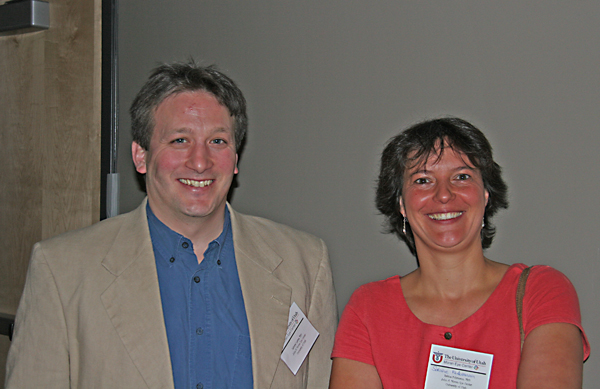
Ed and Sabine.
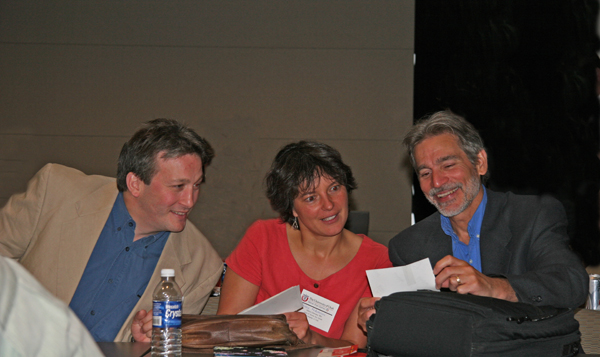
Ed, Sabine and Tom.
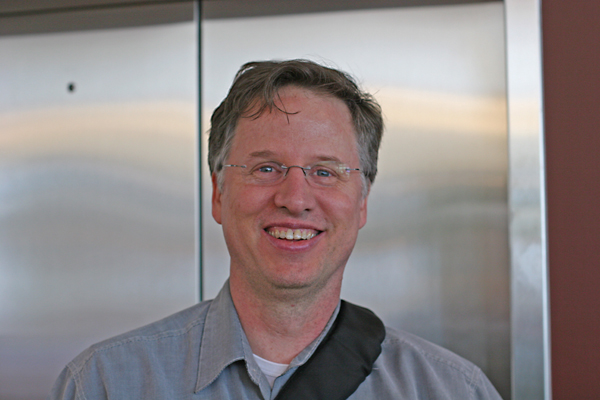
Jason Goldsmith, one of our clinicians.
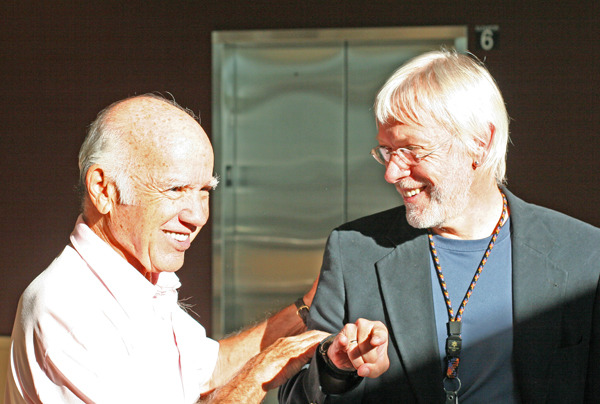
The namesake of our building, John A. Moran to whom the entire vision community should be grateful and Robert, our research director.
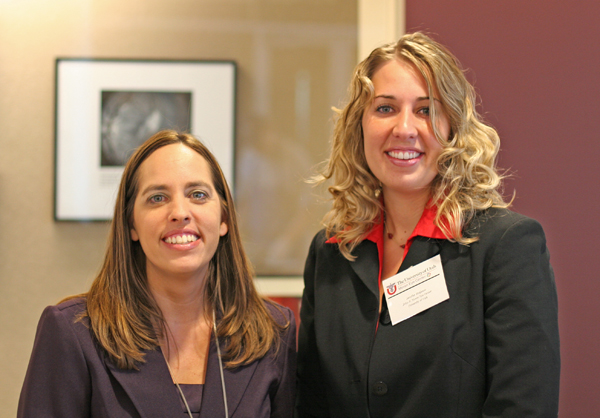
Julee and Jen.
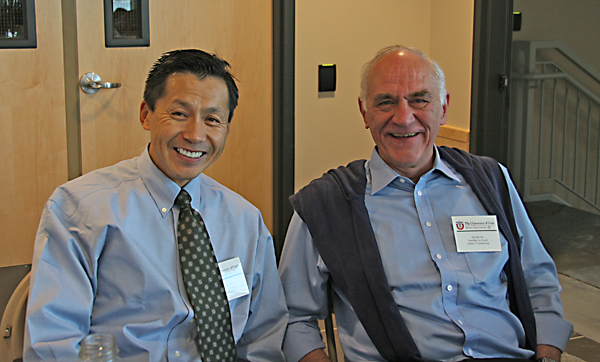
Kang and Alan.
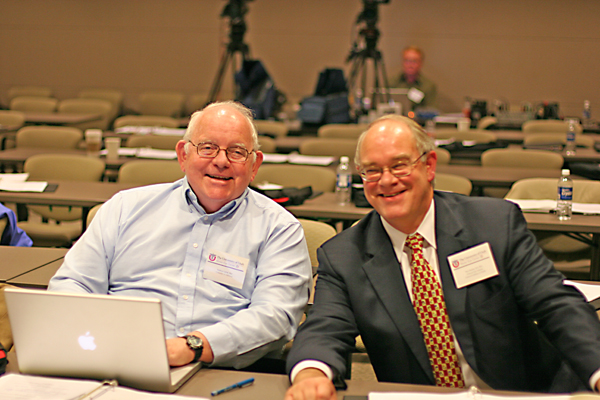
Matt and Paul.
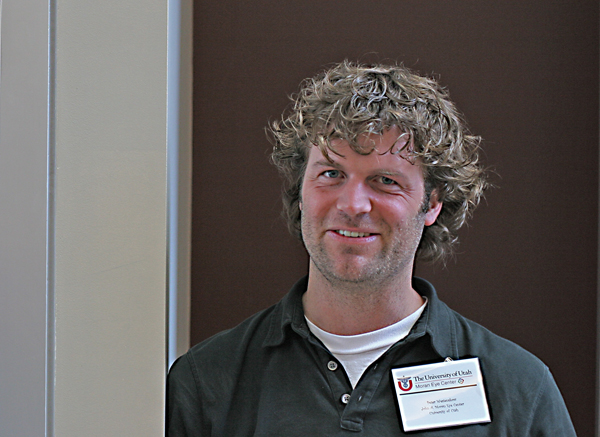
Peter Westenskow, one of our graduate students.
Robert and Randy.
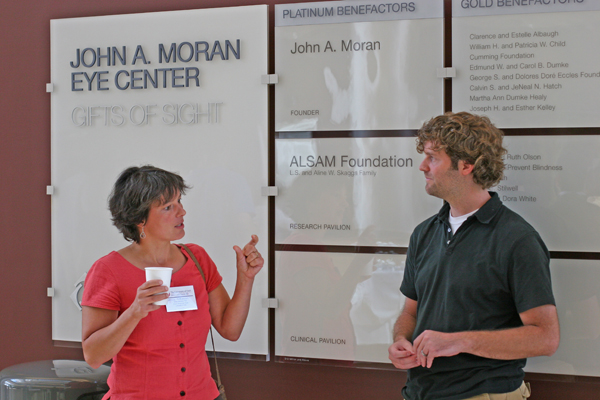
Sabine and Peter.
More photos will follow tomorrow with image of me in a Tux!
